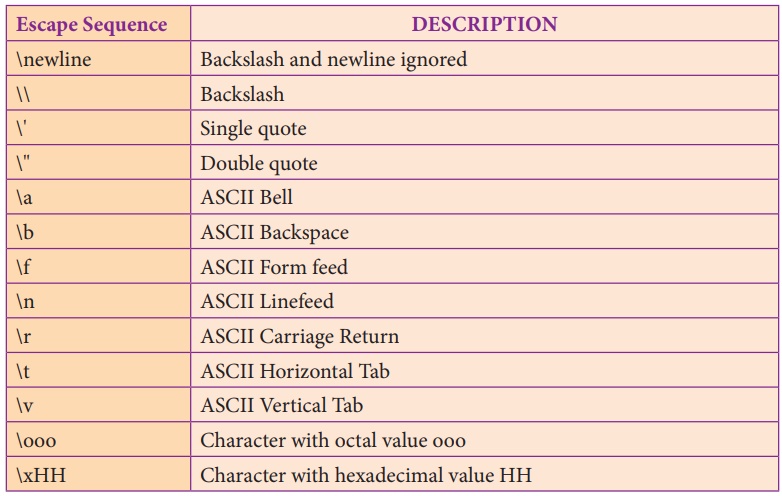Table of Contents
- Escape Characters | Python for Beginners | Lecture 5 - YouTube
- Escape Sequence Characters in Python | Escape Characters in Python ...
- Escape Sequence Characters In Python Multi Line Comment Python | Hot ...
- Escape Sequence Character in Python
- Python ascii control characters
- Escape Characters In Python - Beginner Python Tutorial 🔵🟡 \n and \t ...
- Escape sequence characters in python| python tutorial #6| Learn python ...
- Python Escape character and new line | Escape Characters in Python ...
- Formatting characters - Python
- Escape Characters in Python Hindi || Tutorial - 12 || Python Tutorial ...

When working with strings in Python, you may have encountered situations where you need to include special characters or escape sequences. This is where escape characters come into play. In this article, we will delve into the world of escape characters in Python, exploring what they are, how to use them, and providing examples to illustrate their application. Whether you're a beginner or an experienced programmer, this tutorial will help you master escape characters and take your Python skills to the next level.


What are Escape Characters?

Escape characters are special characters in Python that allow you to include characters that have a special meaning in a string. They are used to "escape" the normal interpretation of a character, enabling you to use it in a different context. For example, the newline character (\n) is an escape character that allows you to create a new line in a string. Without escape characters, you would not be able to include these special characters in your strings.


Common Escape Characters in Python

Here are some of the most commonly used escape characters in Python:

- \n: Newline character
- \t: Tab character
- \r: Carriage return character
- \b: Backspace character
- \f: Form feed character
- \v: Vertical tab character
- \\: Backslash character
- \': Single quote character
- \": Double quote character

Using Escape Characters in Python Strings
To use escape characters in Python strings, you simply need to precede the character with a backslash (\). For example:
print("Hello\nWorld") # Outputs: Hello
# World
print("Hello\tWorld") # Outputs: Hello World
In this example, the \n and \t are escape characters that create a new line and a tab, respectively.

Raw Strings and Escape Characters
Raw strings are a type of string in Python that treats backslashes as literal characters, rather than escape characters. To create a raw string, you precede the string with the letter "r". For example:
print(r"Hello\nWorld") # Outputs: Hello\nWorld
In this example, the \n is treated as a literal backslash and "n", rather than an escape character.
In conclusion, escape characters are an essential part of working with strings in Python. By mastering escape characters, you can create complex strings with special characters and escape sequences. Whether you're working with text files, user input, or simply need to include special characters in your strings, escape characters are a vital tool to have in your Python toolkit. With this comprehensive guide, you're now equipped to handle escape characters with confidence and take your Python programming skills to the next level.
For more tutorials and guides on Python programming, be sure to check out CodeWithHarry. With a wide range of tutorials and resources, you'll be well on your way to becoming a proficient Python programmer.